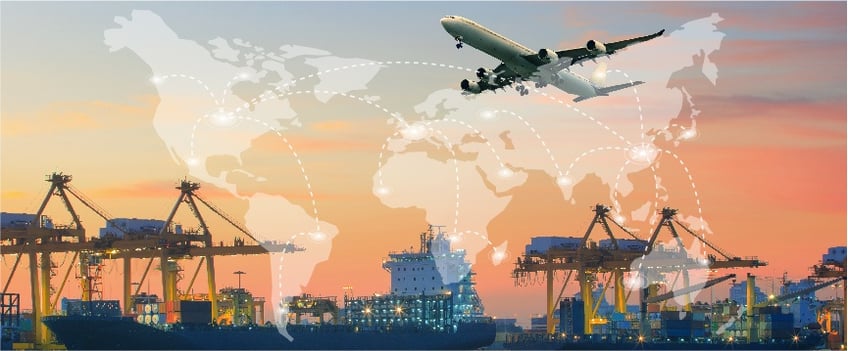
Global supply chain complexity continues to grow. Competitive pressures are driving companies to exploit sourcing opportunities in increasingly remote areas, while customers are demanding shorter lead times and ongoing cost reductions. One of the most significant levers that can drive increased performance is the design of the logistics network. An optimally designed model can help drive high levels of performance, and in doing so, can help companies increase growth and bottom line performance.
One of most significant changes taking place in distribution networks can be characterized as a move towards "virtualization." Simply put, in an effort to reduce cost, lead-time, and inventory, non-manufacturing companies have been looking for ways to fulfill customer orders more directly from their suppliers.
Doing so requires that transport flows be optimized for distance and cost, while DCs are bypassed. In other words, they are separating "distribution" from "distribution center," and realizing that distribution is a process, not a place.
In a virtual network, functions such as receiving, QA, testing, kitting, and labeling need to be done in natural transit locations such as gateways, container freight stations, cross-docks, etc. And the financial transactions need to be managed using extremely reliable electronic messaging. The diagram below depicts a traditional DC model alongside a virtual network. The differences are significant, as is the work in implementing one. But in the right circumstances, the benefits are substantial.

In the virtual model, one of the key capabilities needed is a network of warehouses that can act as either cross-docks or stocking points. And they need to be available in multiple cities. The logic is simple - you need to have the flexibility to flow pre-sold goods directly to your customers, while maintaining the ability to do a put away for goods not yet sold.
The pool point is illustrated as a second tier flow-through or stocking point, typically found close to demand. Many companies refer to this as a forward stocking location. The idea here is actually quite simple: cross-docks and pool points can co-exist naturally as long as the economics are sound.
Is this a good idea for your business?
Maybe not for all channels, but for a part of your business, it might be ideal. For example, do you have customers who stock your products and may be able to change their lead time expectations so you can convert to a build-to-order model? Even a partial one? Do some of your products make sense for this type of model, even if others don't?
We have seen an increasing number of customers move in this direction, even if only for part of their business. Operating a virtual network in combination with a fixed DC network is the most common selection. This hybrid allows some products or channels to be served using the higher velocity/lower cost model, while more traditional distribution is employed for the balance of the business.
As supply chains continue to evolve and companies need more adaptive networks to thrive, the virtual network will continue becoming more prevalent. Performance pressures on the supply chain will force this evolution to continue.
One more thing is certain - the relationship between customers doing virtual distribution and their logistics providers will need to include very tight process and technology integration. There is just too much risk for anything less than perfect processes, operating on a foundation of collaboration and trust.




